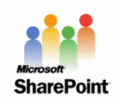Within today’s business structures, there’s a growing element of collaboration. This means that employees are looking to their employers to provide easy to use and maintain collaboration resources within their business infrastructure. This also means that developing an internal social community that makes sharing and updating files and folders is easier than ever.
This is just one of Microsoft SharePoint’s many strong suits. Whether it’s community building, social computing or sharable feeds, SharePoint has social built into its framework. There are plenty of resources and features available to SharePoint users to help facilitate social sharing and collaboration in the work place. In this post, we’re going to take a look at five of those features.
Top Five Social Features of SharePoint
- Communities – In older versions of SharePoint, you could simply add a social functionality to specific sites accessible within your business structure. This often meant enabling conversations by adding discussion lists to any given site. In SharePoint 2013, the social aspect of workplace community building will be stepped up a notch with community templates and portals built into the SharePoint platform. Community sites in the workplace nurture an environment of open discussion and collaboration, and can all be done from a single community portal. The community portal, built for enterprise-class companies, also allows you to search for specific SharePoint sites within it.
- Newsfeed – Much like a newsfeed on a social network like Twitter, Facebook or Google+, the SharePoint newsfeed allows you to create a customized feed based on user activity within your SharePoint platform. The feed is setup to display 20 news items in reverse order (oldest to newest). Also, the activities feed shows specific processes that each user has recently participated in.
- Social Search – The idea behind social search is fairly simple. It allows you to search for just about any keyword and locate content within the social framework built into SharePoint. In SharePoint 2013, site administrators can even specify a multitude of locations where search queries can come from.
- Lync 2013 – Lync is a web-based portal that allows administrators to easily view and manage contacts within the SharePoint framework. For instance, if you’re in an online meeting and you need to view a contact quickly, Lync highlights a user’s active online directory listing, as opposed to a phone number. This means one-click contact management in real time.
- Site Mailboxes – According to Microsoft, this should be thought of as a central filing cabinet. In other words, site mailboxes serve as a virtual place to store all Exchange and SharePoint files, folders and documents. The idea behind this is that it provides an easy portal for site members and administrators to access, edit and share documents in real time.
With the rise of powerful internal collaboration processes, it’s no secret that the enterprise has become more social than ever. As a result, companies like Microsoft have been actively building and developing applications and tools to facilitate social sharing and collaboration. In short, SharePoint 2013 makes social enterprise development easier and more seamless than ever.

